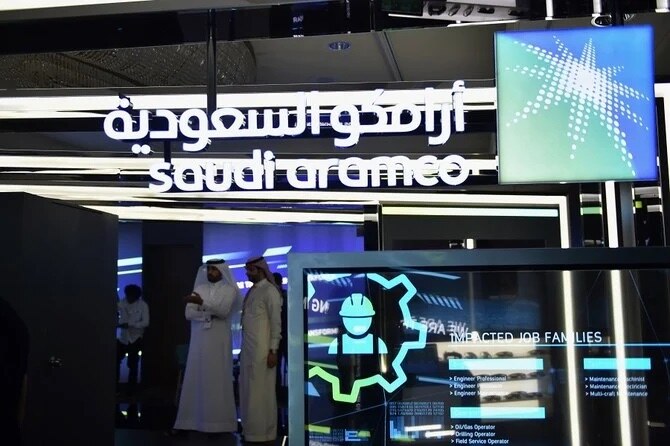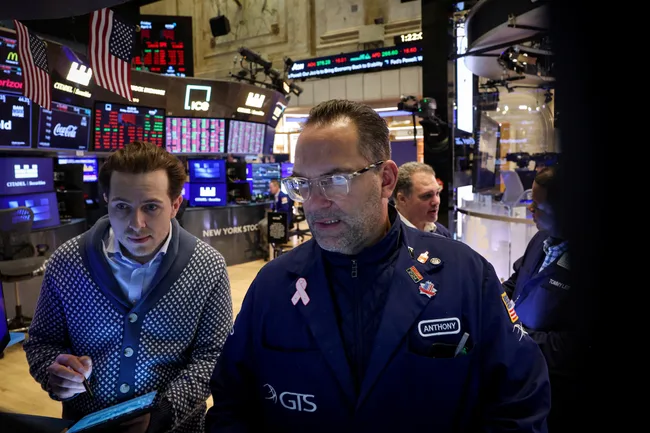Saudi Arabia’s stock market has suffered one of its worst sell-offs in recent years, with energy giant Saudi Aramco taking the hardest hit. The oil company’s valuation dropped by a staggering $90 billion in a matter of days, reflecting wider investor anxiety and economic pressure across the kingdom. The plunge is part of a broader market downturn that wiped out over $133 billion in value from the Saudi exchange.
This financial jolt has raised concerns both within the Gulf region and globally. As Aramco represents the heart of the Saudi economy, its struggles have become a symbol of the challenges currently facing the kingdom—from global oil price fluctuations to geopolitical instability and increasing fears of a global recession.
A Shockwave Across the Saudi Exchange
The Tadawul All Share Index (TASI), the primary index of the Saudi Stock Exchange, dropped 6.8% in a single day, marking its worst session since March 2020, when markets reeled from the early days of the COVID-19 pandemic. Market analysts described the sharp drop as a wake-up call, driven by external and internal pressures all hitting at once.
Aramco, the world’s largest oil producer and one of the most valuable companies globally, saw its stock price sink significantly. The company’s total market capitalization fell by more than $90 billion, reflecting both falling oil prices and dwindling investor confidence.

This dramatic loss in Aramco’s value wasn’t an isolated case. Across the Saudi exchange, almost every sector saw sharp declines. Altogether, the market lost approximately $133 billion in just one trading session, a figure that has sent shockwaves across financial communities in the Gulf and beyond.
Oil Prices Add Fuel to the Fire
One of the key triggers of this sell-off was the fall in global oil prices. Brent crude, the international benchmark, slumped by over 7% amid rising concerns about slowing global demand and increasing supply. Despite OPEC+ efforts to manage output and stabilize prices, markets remain volatile.
Complicating the picture, China and the United States, two of the world’s biggest economies and oil consumers, are locked in a tense trade conflict. The latest exchange of tariffs between the two nations has sparked concerns that a full-blown global trade war could dampen economic growth and energy demand. China’s recent imposition of 34% retaliatory tariffs on U.S. goods has only deepened those fears.
This drop in oil prices directly hits Aramco’s bottom line, as well as the broader Saudi economy, which still relies heavily on petroleum revenues despite its ongoing diversification efforts.
Aramco’s Financial Performance Under Pressure
Saudi Aramco recently released its half-year financial report, which showed profits of $56.3 billion—a strong number by global standards but a clear drop from the same period last year. The decline has been attributed to falling crude oil volumes, tighter refining margins, and weakening demand from key markets.
Even as revenues rose to over $220 billion in the first six months of the year, the company’s net income fell, leading investors to grow increasingly cautious. Aramco declared dividends of $31.1 billion for the second quarter alone and aims to distribute over $124 billion this year. While the company remains profitable and generous with payouts, the gap between revenue growth and earnings shows signs of strain.
This financial situation is especially concerning because Aramco is a cornerstone of the Saudi economy. Its performance directly impacts the government’s ability to fund large-scale development projects and deliver on Vision 2030, Crown Prince Mohammed bin Salman’s ambitious economic reform plan.
Impact on the Broader Economy
The fall in Aramco’s valuation has raised larger questions about Saudi Arabia’s economic outlook. Oil revenues are still a major source of funding for state-led projects, including the $500 billion NEOM smart city, entertainment hubs, infrastructure upgrades, and the anticipated 2034 FIFA World Cup.
With oil prices dipping and markets remaining unstable, the kingdom may have to seek alternative funding routes, including increased borrowing or reduced spending, to keep its mega-projects on track. Analysts say that unless oil prices stabilize or recover in the short term, these financial pressures could mount.
Moreover, the market collapse could lead to reduced foreign investor confidence at a time when Saudi Arabia is actively trying to attract international capital. A sell-off of this scale undermines the narrative of a stable, investor-friendly economic environment.
Regional Contagion: Gulf Markets Follow Suit
The Saudi sell-off had ripple effects across neighboring Gulf nations. Stock markets in the UAE, Qatar, Kuwait, and Egypt also fell sharply. Qatar’s benchmark index dropped over 4%, while Kuwait’s market tumbled nearly 6%. Egypt’s EGX30 saw a decline of 3.3%.
These regional dips were largely in response to the growing fear that global trade tensions and weakening energy prices could slow down growth across the Gulf Cooperation Council (GCC) economies. Most of these countries, like Saudi Arabia, are heavily dependent on oil exports and are interconnected through trade, finance, and regional investment flows.
Financial analysts warned that unless global conditions stabilize—particularly the oil market and trade disputes between superpowers—more turbulence could be on the way for Gulf stock exchanges.
Investor Sentiment Wavers
Investor confidence has clearly taken a hit. The recent events have caused widespread uncertainty among both institutional and retail investors. As major companies like Aramco falter, market volatility increases and investors become more risk-averse.
While there’s hope that easing trade tensions or a rebound in oil prices could turn things around, the outlook remains uncertain. Some experts suggest that markets could stabilize if geopolitical relations improve, particularly between the U.S. and China. However, others caution that deeper economic challenges, such as inflation, rising interest rates, and shrinking global demand, may lead to longer-term financial instability.
What’s Next for Saudi Markets?
The coming weeks will be crucial for Saudi Arabia’s stock market and economic trajectory. Aramco remains a bellwether not only for the Saudi economy but also for global energy markets. If the company can weather this storm, it may help stabilize broader investor sentiment.
Meanwhile, policymakers are likely to reassess their economic strategies. Diversifying away from oil, encouraging private sector growth, and strengthening non-oil revenues will remain high on the agenda. However, these are long-term goals, and short-term market fluctuations—especially ones this severe—can cause significant disruption.
Saudi Arabia has weathered financial storms before, but this latest plunge underscores just how sensitive the kingdom remains to the unpredictable forces of global energy markets and geopolitical tension.
Saudi Arabia’s Stock Market Jumps 2% Amid Global Trade War Buzz



